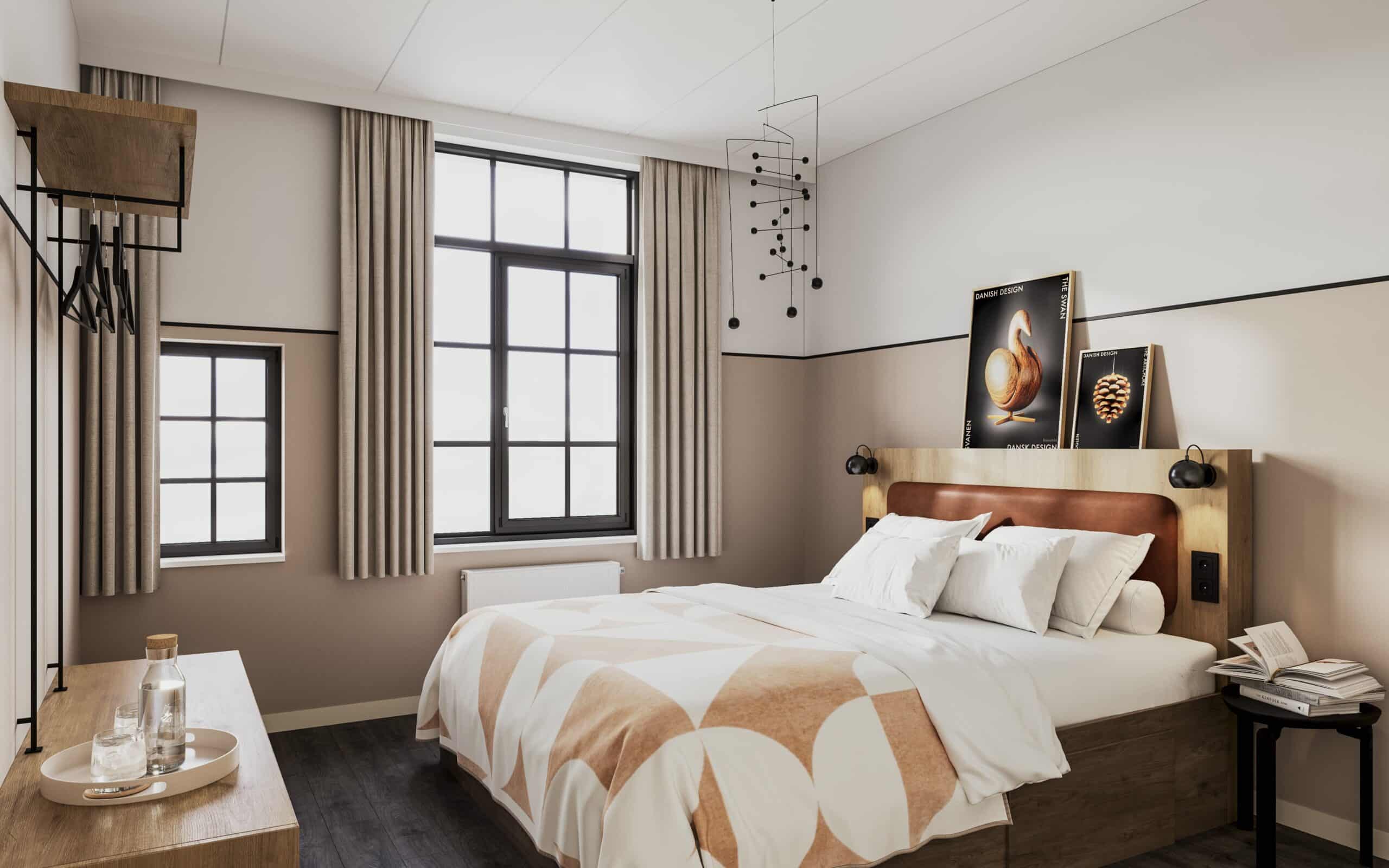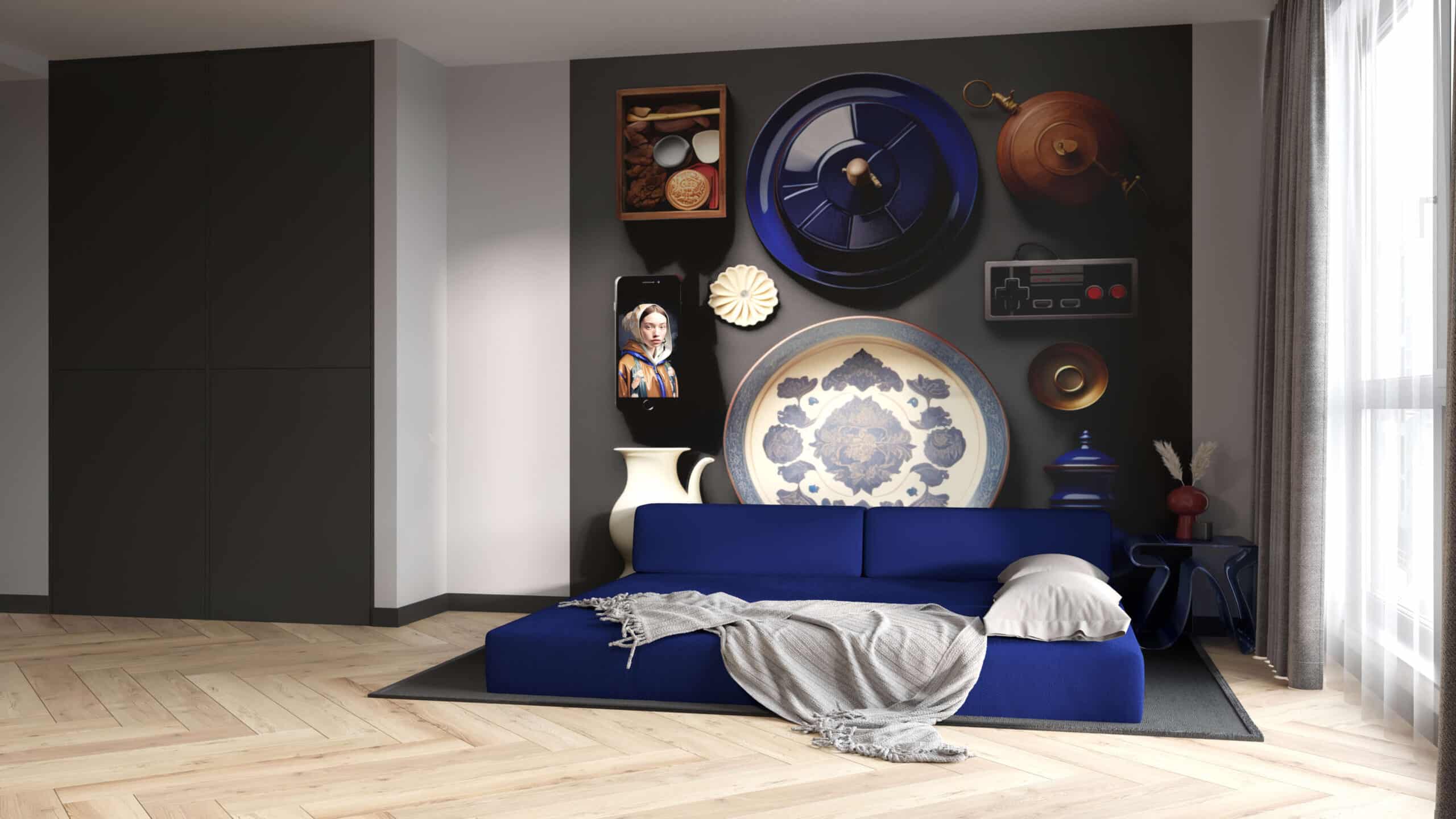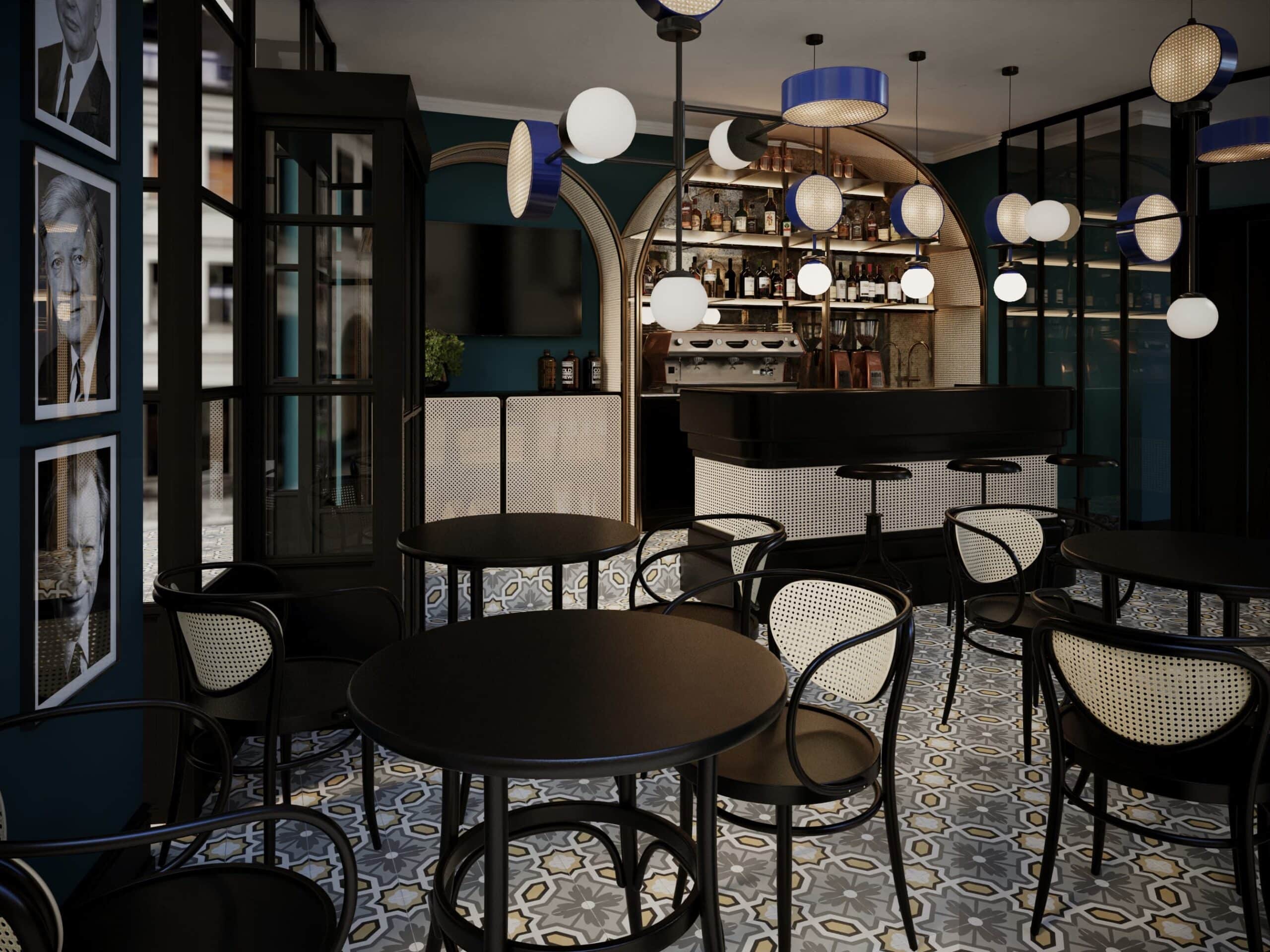Interior rendering is a multifaceted art form that entails creating an immersive atmosphere that resonates with the viewer while setting up all the details which were carefuly picked by the architect or interior designer andone of the essential elements that shape ambiance is shadows in 3D interior renderings. Shadows in 3D interior renderings are usally overlooked as furniture set up, lights, design details, perspective and other stuff play more important role, but shadows are the last hidden detail which is like a cherry on the cake – it makes the rendering really alive. We rarely experience spaces completely sunny, completely lit, no shadows. That is just not realistic. And in the interior renderings the photorealism is what we are looking for.
Shadows play a crucial role in adding depth, realism, and drama to the digital images as it creates real life set up and in our experience we can see that simple clean sunny spaces do not showcase design elements in the best light. In this comprehensive guide, we offer seven our 3D designer tips on mastering the power of shadows to create captivating interior renderings.
1. Gain an In-Depth Understanding of Natural Light

To master shadows in interior rendering, it is essential to comprehend the subtleties of natural light. Analyze the architectural details, the orientation of windows, and the time of day to simulate realistic lighting scenarios. Shadows are inherently linked to the angles and intensity of light, requiring a deep understanding of these factors to achieve authenticity.
2. Experiment with Different Light Sources

To create various shadow effects, diversify the lighting in the interior scene. Experiment with different types of light sources, such as pendant lights, floor lamps, or recessed lighting. Each light fixture contributes to a unique shadow pattern, enhancing the overall visual interest and adding layers to the interior space. Play with the intensity and color temperature of lights to evoke specific moods in the scene.
You can create very cozy and ambient spaces if you use lamps or even a TV as a light source in an evening set up (no light coming from windows), as it creates real life setup. If you want to create romantic atmosphere, you can even use candles or lanterns as a light source and get some beautiful dancing shadows.
3. Utilize Shadows to Accentuate Texture

Shadows can be potent tools for emphasizing the texture of surfaces within an interior. Shadows accentuate the grain of wooden furniture, the weave of a fabric, or the intricacies of a tiled floor. Adjust the softness or hardness of shadows to complement the texture you want to feature, adding a tactile quality to your digital representation.
Textures of surfaces are crucial for photorealism, so use it any chance you have. We do not pay attention that even in real life a wooden facade or concrete floor from far away looks quite plain, but if you add shadows, you can see that actually these surfaces and materials have texture and character. It is very important to make notice of that.
4. Focus on Scale and Proportion

Pay meticulous attention to the scale and proportions of objects within the scene. Shadows can be effective indicators of scale, conveying the size and weight of furniture, décor, and architectural elements. Properly scaled shadows contribute to a sense of realism, providing the viewer with a feeling of stepping into the rendered space.
5. Consider the Psychological Impact of Shadows

Shadows influence the visual aesthetics as well as the psychological impact of rendered interiors. Use shadows strategically to guide the viewer’s focus and create focal points within the scene. Casting shadows on a reading nook, for example, can draw attention to that cozy corner, making it inviting and visually compelling. As being said before, shadows create real life setup, so it becomes recognizable and acceptable by viewers.
6. Implement Dynamic Shadow Adjustments for Different Times of Day

To enhance the realism of your interior rendering, consider incorporating dynamic shadow adjustments to simulate different times of day. Morning sunlight casts long, soft shadows, while the afternoon sun creates shorter, more defined shadows. This attention to temporal variations adds an extra layer of authenticity to your digital representation, making it more relatable and visually engaging. You can play around with different setups for the same space or rendering perspective to find out the most welcoming one for you.
7. Embrace Negative Space to Sculpt the Visual Narrative

Incorporate negative space, the areas where shadows fall, as a deliberate design element. This technique allows you to sculpt the visual narrative by controlling the interplay between light and shadow. Negative space defines architectural features, highlights focal points, and guides the viewer’s gaze through the interior, creating a harmonious and balanced composition.
Conclusion: shadows in 3D interior renderings
In conclusion, mastering shadows in interior rendering requires technical proficiency, as well as artistic sensitivity. By understanding the interplay of natural light, experimenting with various light sources, and leveraging shadows to define texture and scale, you can elevate your interior renderings to new heights. These seven expert tips will equip you with the knowledge and skills to create captivating, realistic, and emotionally resonant interior visualizations that leave a lasting impression.
We invite you to be braver with your interior renderings and try different setups with lights and shadows and not use completely sunny spaces. Shadows add character and make 3D renderings to be more welcoming, exceptional and artistic.







